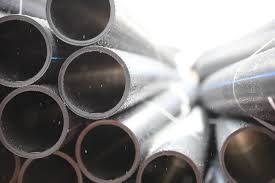Nov . 21, 2024 02:02 Back to list
hdpe to pvc pipe coupling product
Understanding HDPE to PVC Pipe Coupling Products
Plumbing and piping systems are essential components of infrastructure, agriculture, and various industrial applications. Among the most widely used materials in these systems are High-Density Polyethylene (HDPE) and Polyvinyl Chloride (PVC). Each material offers unique properties and advantages, leading to their extensive use in different scenarios. However, there are instances where a connection between these two types of pipes is necessary, making HDPE to PVC pipe coupling products vital for seamless transitions.
What is HDPE?
HDPE, or High-Density Polyethylene, is a thermoplastic polymer known for its high strength-to-density ratio. It is widely used in various applications, including water pipes, fuel tanks, and chemical containers, due to its robustness, resistance to impact, and durability. HDPE is also resistant to a range of chemicals, making it suitable for transporting various substances without risk of deterioration or leakage. Its flexibility and ease of installation further enhance its utility in infrastructure projects, particularly in water and gas distribution.
What is PVC?
Polyvinyl Chloride (PVC) is another widely used thermoplastic. It is known for its versatility, durability, and low cost, making it a popular choice in construction, plumbing, and electrical applications. PVC is resistant to corrosion, which makes it an excellent choice for water supply systems. Additionally, it is non-toxic and recyclable, adding to its environmental benefits. PVC pipes are often used in drain systems, irrigation, and other plumbing applications where material strength and resistance to environmental factors are paramount.
The Need for Coupling Products
Transitioning from HDPE to PVC pipes requires a reliable coupling solution. This need arises in various scenarios, such as system upgrades, repairs, or extending existing plumbing structures. Connecting two different types of pipes can be challenging due to their varying diameters, material properties, and thermal expansion rates.
Coupling products are designed to bridge this gap seamlessly. They ensure a secure connection, preventing leaks and ensuring the structural integrity of the piping system. Proper couplings not only facilitate the joining of different pipe materials but also accommodate variations in pipe sizes, enhancing the flexibility of engineers and installers in designing efficient systems.
Types of HDPE to PVC Couplings
hdpe to pvc pipe coupling product

There are several types of couplings available for joining HDPE and PVC pipes. These include
1. Mechanical Couplings These couplings utilize mechanical locking mechanisms to join pipes. They can be easily installed without the need for advanced tools or welding, making them ideal for quick repairs and installations.
2. Compression Couplings Designed to connect pipes of different sizes, compression couplings use rubber gaskets and compression fittings to create a secure and leak-proof seal. The simplicity of installation and removal makes them an excellent choice for temporary connections.
3. Flanged Connections Flanged couplings provide a robust connection by using flat surfaces and bolts to hold the pipes together. This type of coupling is suitable for high-pressure applications and allows for easy disassembly if repairs are needed.
4. Fusion Couplings This method involves thermally fusing the HDPE and PVC together using heat to melt the pipe ends before joining them. This creates a high-strength, permanent bond, making it particularly effective for long-term applications.
Considerations When Selecting Couplings
When selecting HDPE to PVC coupling products, several factors must be considered
- Compatibility Ensure the coupling material can withstand the working pressures and temperatures of your system. - Size and Dimensions Proper sizing is crucial to ensure a leak-proof connection. - Installation Method Consider whether you prefer a quick installation or a more permanent solution. - Cost Evaluate the budget while balancing quality and performance.
Conclusion
In summary, HDPE to PVC pipe coupling products are essential for effectively bridging the gap between these two popular piping materials. Their availability in various forms ensures that professionals in plumbing and construction can efficiently manage transitions, repairs, and upgrades within their systems. By understanding the properties of both HDPE and PVC, as well as the types of couplings available, stakeholders can make informed decisions that enhance the durability and efficiency of their piping infrastructure. Whether for residential, commercial, or industrial applications, selecting the right coupling can lead to long-term performance and reliability in any piping system.
-
High-Quality PVC Borehole Pipes Durable & Versatile Pipe Solutions
NewsJul.08,2025
-
High-Quality PVC Perforated Pipes for Efficient Drainage Leading Manufacturers & Factories
NewsJul.08,2025
-
High-Quality PVC Borehole Pipes Durable Pipe Solutions by Leading Manufacturer
NewsJul.08,2025
-
High-Quality PVC Borehole Pipes Reliable PVC Pipe Manufacturer Solutions
NewsJul.07,2025
-
High-Quality UPVC Drain Pipes Durable HDPE & Drain Pipe Solutions
NewsJul.07,2025
-
High-Quality Conduit Pipes & HDPE Conduit Fittings Manufacturer Reliable Factory Supply
NewsJul.06,2025

